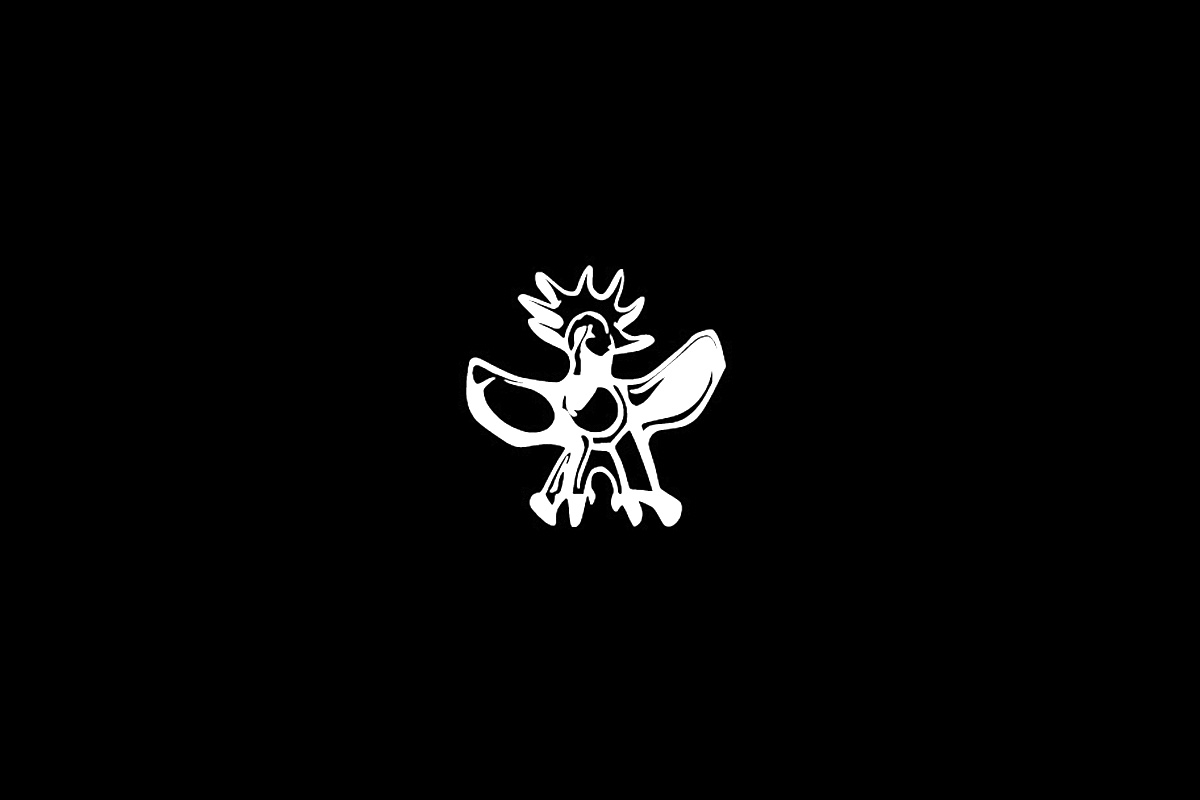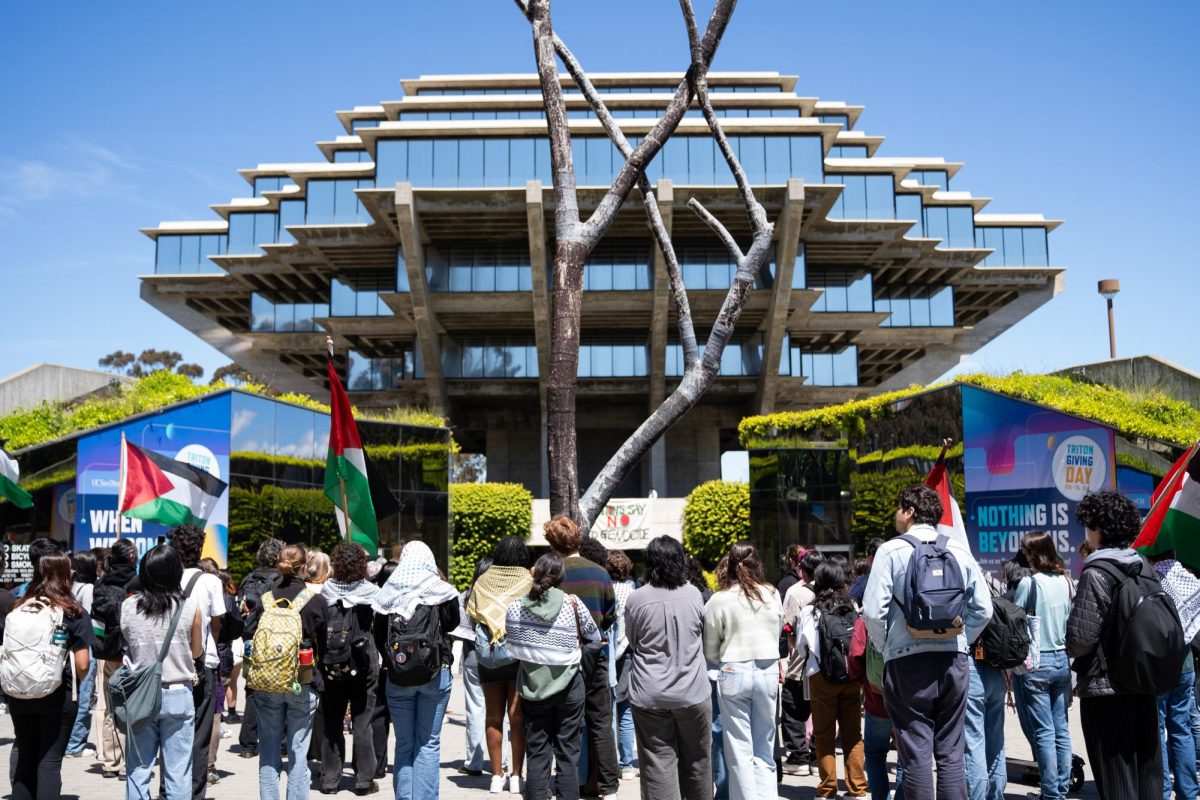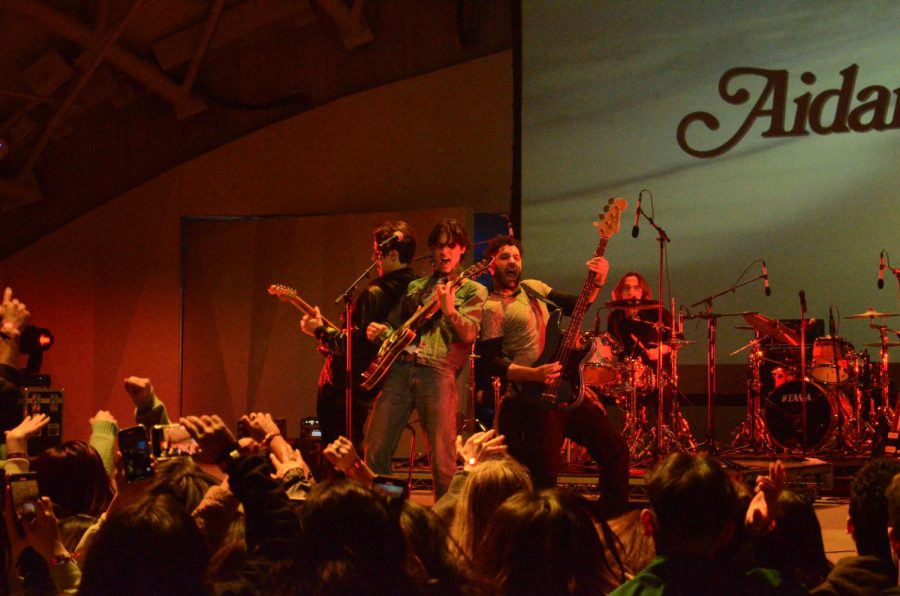A large Aztec pyramid constructed entirely from empty green plastic strawberry containers is on display. Many of the containers still carry the stains of the fruit they once held. Imposing, mesmerizing, and in the right light, the plastic even appears somewhat iridescent — but what does it mean?
In conceptual art, form and technique is not important. The focus is on the idea rather than strict rules.
“”Object/Concept, a Cross-Media Series and Exhibition,”” which features conceptual works, is on display April 5 through June 16 at the University Art Gallery.
The exhibit marks the 35th anniversary of UCSD’s visual arts department, and it features the works of 16 UCSD faculty members.
Jana Minka, the University Art Gallery curator, says the artists whose works are exhibited are the next generation of faculty artists, taking the medium to a new level.
The show is called “”Object/Concept”” because the artists have found a way to illustrate an idea through a single object or a series of images.
“”Using this technique, the artists draw on the cultural and personal baggage of the viewer to make associations that wouldn’t normally exist in the object itself, but may be found in its cultural context,”” Minka said.
The caption adjacent to a tower of green plastic reads, “”The Pyramid of the Sun at Toetihueacan outside Mexico City … 2.5 million tons of rock and rubble were piled on over a period of at least 300 years. Now in California, it takes only four years to pick 2.5 million tons of strawberries. The red berries are picked off the ground, one by one.””
The piece is titled “”Piramide del Sol: A Monument to Invisible Labor.””
Many of the pieces on display in the exhibit hold similar reflections of social and institutional critiques, creating art itself.
Near the front of the exhibit is a piece whose placement seems particularly ironic. In big bold letters are the words “”Art Sale.”” Its composition is a reflection of “”out-of-the-box,”” art as a phenomenon rather then a composition a turn that modern art has recently taken.
One interesting element of the exhibit is a new and innovative concept in computer-based art forms illustrated by Adriene Jenik’s piece, “”Moments in Desktop Theater.””
“”Desktop theater is made whenever intentional theater-like activity wafts through the layers of unintentional drama and surreal banality in online visual chat rooms,”” Jenik said.
Since 1997, Jenik has performed over 25 different live desktop theater experiments. These experiments range from a live performance of “”Waiting For Godot”” interspersed with the ramblings of a random chat room, to an online protest of violence against woman consisting of three graphics of women veiled in black passing silently through a visual chat room. More information on desktop theater, online performance and rehearsal logs can be found at http://leda.ucsd/%7eajenik/archive/files/a_fr_oI.htm.
Another example of computer art on display is Amy Alexander’s “”the bot (one infesting the horse),”” which is essentially, as Alexander describes it, “”a search engine in reverse.””
The piece is meant to mimic the flow of network packaging.
The exhibit is dedicated to the memory of professor of visual arts Italo Scanga. Coming from an Italian peasant background, Scanga became a member of the UC faculty in the 1970s. One of his pieces, “”Potato Famine,”” is on display in the gallery.







